You can translate this blog using Google translator widget. And you can always comment in your language, of course!
Yellow texts are in English

montgomery clift
31.1.09
Ciné-Tele Revue 1986
30.1.09
Judgment At Nuremberg
Studio: MGM Home EntertainmentGenre: WarMPAA Rating: Director: Theatrical Release: N/AHome Video Release: N/ACast: N/APublished ID: 438067UPC: 027616911148,
Plot: After the end of World War II, the world gradually became aware of the full extent of the war crimes perpetrated by the Third Reich. In 1948, a series of trials were held in Nuremberg, Germany, by an international tribunal, headed by American legal and military officials, with the intent of bringing to justice those guilty of crimes against humanity. However, by that time most of the major figures of the Nazi regime were either dead or long missing, and in the resulting legal proceedings American judges often found themselves confronting the question of how much responsibility someone held who had just followed orders. Judgment at Nuremberg is a dramatized version of the proceedings at one of these trials, in which Judge Dan Haywood (Spencer Tracy) is overseeing the trials of four German judges -- most notably Dr. Ernst Janning (Burt Lancaster) and Emil Hahn (Werner Klemperer) -- accused of knowingly sentencing innocent men to death in collusion with the Nazis. Representing the defense is attorney Hans Rolfe (Maximilian Schell), while prosecuting the accused is U.S. Col. Tad Lawson (Richard Widmark). As the trial goes on, both the visiting Americans and their reluctant German hosts often find themselves facing the legacy of the war, and how both of their nations have been irrevocably changed by it. Judgment at Nuremberg also features notable supporting performances by Marlene Dietrich, Judy Garland, and Montgomery Clift. Originally written and produced as a play for television, the screen version of Judgment at Nuremberg was nominated for 11 Academy Awards, with Maximilian Schell and Abby Mann taking home Oscars for (respectively) Best Actor and Best Adapted Screenplay. ~ Mark Deming, All Movie Guide
12 Angry Men
From Here To Eternity
12 In A Box
Music Box
It's A Mad Mad Mad Mad World
2012
Holocaust Series
Inherit The Wind
24 City
The Statement
A Cry In The Dark
500 Days Of Summer
Inherit The Wind
The Rose Garden
9
Conspiracy
Music Box
9.99
The Defiant Ones
Kramer Vs. Kramer
The Accidental Husband
Guess Who's Coming To Dinner
The Dawning
Adam
Marlene
All The King's Men
Aliens In The Attic
Criss Cross
perma-link:
Bookmark:
select
Your browser does not support inline frames or is currently configured not to display inline frames.
Choose a problem:
Video quality is poor
Audio quality is poor
No sound when video plays
Video does not play
Hear audio, but can't see video
Video freezes
Video does not play, but time counter moves
Skips past video to next title
Video is offensive to an adult audience
Provide any additional useful information (optional):
Enter your e-mail address (optional):
Invalid e-mail address
initAd();
loadAd('ads/BBESFVlasic_Home.xml');
var Button_SubmitReport_Id = 'ctl00_ContentSub_Button_SubmitReport';
var prm = Sys.WebForms.PageRequestManager.getInstance();
prm.add_beginRequest(BeginRequestHandler);
prm.add_endRequest(EndRequestHandler);
function BeginRequestHandler(sender, args) {
//document.getElementById(Button_SubmitReport_Id).disabled = true;
}
function EndRequestHandler(sender, args) {
//document.getElementById(Button_SubmitReport_Id).disabled = false;
}
var pconf = { UIConfig: '', defaultContent: 'textar'};
Wildfire.initPost("55081", "divWildfirePost", 475, 165, pconf);
Home
Help
Developer APIs
XML/RSS
Contact Us
About Us
Terms Of Use
Newsletter
SingingFool.com Music VideosMobile-->
29.1.09
Red River.- comentario de Judith M. Kass

El guión de Río Rojo, un relato disimulado de la saga del rancho King de Texas, fue escrito por Borden Chase y Charles Schnee a partir de "The Chrisholm Trail", un relato de Chase publicado en el Saturday Evening Post.
Un breve prólogo expone los hechos que configurarán la acción principal y presenta a los tres protagonistas: Tom Dundson, Matthew (Matt) Garth y el amigo de Dunson, Groot, interpretados por John Wayne, Montgomery Clift y Walter Bennan.
Sinopsis:
La narración nos traslada a catorce años más tarde y empieza con la salida de la primera conducción de ganado a lo largo de Chisholm Trail, con una longitud de 1000 millas, desde el norte de Río Grande hasta Abilene (Kansas). Matthew, recién lklegado de la guerra civil que ha arruinado al Sur y ha obligado a Dunson a llevarse su ganado hacia el norte, ayuda a guiar la expedición. Durante el trayecto, empujado por la preión de tener que salvar el ganado, Dunson adopta un actitud cada vez más despiadada, matando a los desertores y amenazando a los otros con latigazos o la horca. Pero Matthew se pone del lado de los amotinados y le arrebata el mando a Dunson. Consigue llevarlos hasta Abilene, donde se rumorea que hay ferrocarril, en lugar e Sedalia (en Missouri), que era su destino inicial, y que está mucho más lejos.
Una vez allí, se enfrenta a Dunson, que ha jurado matarlo. Los dos hombres empiezan a luchar, pero su encarnizada pelea es interrumpida por Tess Millay (Joanne Dru), una bailarina de salón cuya compaía habían salvado de un ataque indio, Matt y sus hombres. El enfado de la chica, la pistola que dispara para calmarles y la lógica con que les expone que Dunson nunca podrá matar a Matt, porque los dos hombre se quieren demasiado, consigue resolver el conflicto y favorece la reconciliación.
Clift, que había aprendido a montar a caballo en una academia militar de Munich durante un viaje con su madre y hermanos, pasó mucho tiempo e invirtió un considerble esfuerzo para conseguir dominar la técnica de los vaqueros. Perfeccionó una sinuosa manera de caminar para su personaje y se entrenó para saltar al estribo mientras montaba su caballo.

28.1.09
Entrevista a Olivia de Havilland
And, we did.
 her father is very powerful. It's a very strong feeling when one is watching the film. I gather that on the set, there was a bit of a chill as well with the actor who played your father.
her father is very powerful. It's a very strong feeling when one is watching the film. I gather that on the set, there was a bit of a chill as well with the actor who played your father.- And not the Polish woman? [Se está refiriendo a Mira Rostova]
27.1.09
Posando para hoy
25.1.09
Artículo de Filmreference
Nationality:
Films as Actor:
The Search (Zinnemann) (as Ralph Stevenson); Red River (Hawks) (as Matthew Garth)
1949
The Heiress (Wyler) (as Morris Townsend)
1950
The Big Lift (Seaton) (as Danny MacCullough)
1951
A Place in the Sun (Stevens) (as George Eastman)
1953
I Confess (Hitchcock) (as Father Michael William Logan); From Here to Eternity (Zinnemann) (as Robert E. Lee "Prew" Prewitt); Stazione termini (Indiscretion of an American Wife; Terminal Station; Indiscretion) (de Sica) (as Giovanni Doria)
1957
Raintree County (Dmytryk) (as John Wickliff Shawnessy)
1958
The Young Lions (Dmytryk) (as Noah Ackerman); Lonelyhearts (Donehue) (as Adam White)
1959
Suddenly Last Summer (Joseph L. Mankiewicz) (as Dr. John Cukrowicz)
1960
Wild River (Kazan) (as Chuck Glover)
1961
The Misfits (Huston) (as Perce Howland); Judgment at Nuremberg (Kramer) (as Rudolph Petersen)
1962
Freud (Freud—The Secret Passion) (Huston) (as Sigmond Freud)
1966
The Defector (L'Espion; Lautlose Waffen) (Levy) (as Prof. James Bower)
Publications
On CLIFT: books—
LaGuardia, Robert, Monty: A Biography of Montgomery Clift, New York, 1977.
Bosworth, Patricia, Montgomery Clift: A Biography, New York, 1978.
Kass, Judith, The Films of Montgomery Clift, Secaucus, New Jersey, 1981.
Fernandez, Lluis, Monty Clift: Pasion Secreta, Barcelona, 1989.
Hoskyns, Barney, Montgomery Clift: Beautiful Loser, London, 1991.
McCann, Graham, Rebel Males: Clift, Brando, and Dean, London, 1991.
Parker, John, Five for Hollywood, Secaucus, New Jersey, 1991.
Kalfatovic, Mary C., Montgomery Clift: A Bio-Bibliography, Westport, Connecticut, 1994.
Leonard, Maurice, Montgomery Clift, London, 1997.
Current Biography 1954, New York, 1954.
Cole, C., "Eyes that Say More than Words," in Films and Filming (London), September 1956.
Obituary in New York Times, 24 July 1966.
Zinnemann, Fred, "Montgomery Clift," in Sight and Sound (London), Autumn 1966.
Roman, Robert C., "Montgomery Clift," in Films in Review (New York), November 1966.
Gow, Gordon, "Closer to Life," in Films and Filming (London), April 1975.
Bosworth, Patricia, "Montgomery Clift: First of a New Breed," in Close-Ups: The Movie Star Book, edited by Danny Peary, New York, 1978.
"Montgomery Clift," in Ecran (Paris), March 1978.
Reed, Rex, "Montgomery Clift," in The Movie Star, edited by Elisabeth Weis, New York, 1981.
Lippe, Richard, "Montgomery Clift: A Critical Disturbance," in CineAction! (Toronto), no. 17, 1989.
Purtell, Tim, "No Place in the Sun," in Entertainment Weekly (New York), 23 July 1993.
Chase, D. "Watershed," Film Comment (New York), no. 32, November/December 1996.

24.1.09
Stazione Termini.- canción Autumn in Rome
Esta es la partitura:
23.1.09
El coche de A place in the sun
22.1.09
Paul Murphy - Montgomery Clift 7" (1985)
A real gem I picked up a while back, a mid 80's 7" single from Paul Murphy and Doug Dinadell recorded right here in my hometown of Scottsdale, Arizona at Cereus Studios.I'm sure these guys were in other bands but I haven't been able to track down any more information on either of them.
Paul Murphy - Vocals, Drums
Doug Dinadell - All Guitars, Bass
Produced By Paul Murphy.
21.1.09
Ficha en Cine 365
 Nombre: Montgomery Clift
Nombre: Montgomery CliftFecha de nacimiento: 17/10/1920
Lugar de nacimiento: en Omaha, Nebraska (Estados Unidos).
Nacionalidad: Estados Unidos.
20.1.09
Unfinished Lives 2, What If?

Marilyn Monroe by Vernon Scott, performed by Joanna Cassidy.
19.1.09
Montgomery Clift Reviews
18.1.09
17.1.09
Biografía en Cine Forever
1949.- The Heiress (LA HEREDERA) Morris Townsend
1950.- The Big Lift (SUCEDIO EN BERLIN) Sgt. 1st Class Danny MacCullough
15.1.09
Red River.- BSO

La productora Marco Polo reeditó la banda sonora en julio de 2003.

Estos son los datos de la grabación y la lista de temas:
(English text)
Recorded at Mosfilm Studio, Moscow, Russia in February and March, 2002. Performed by the Moscow Symphony Orchestra and Choir conducted by William Stromberg.
Track listing
1. Main Title (01:30)
2. Dunson Heads South (04:46)
3. Red River Camp (01:28)
4. The Red Menace Strikes (01:34)
5. The Lone Survivor (02:15)
6. Birth of Red River D (03:15)
7. Mexican Burial (00:58)
8. Growth of the Dunson Empire (01:46)
9. Roundup (00:27)
10. Suspense At Dawn (01:07)
11. On To Missouri (01:35)
12. The Drive Moves North (03:03)
13. The Brazos Trail (00:30)
14. Stampede (02:45)
15. The Missing Cowboy (02:36)
16. Latimer Burial (01:01)
17. Thunder On The Trail (00:44)
18. Red River Ahead (01:25)
19. Red River Crossing (02:01)
20. Cottonwood Justice (00:59)
21. Dunson Swears Vengeance (01:24)
22. Comanche Arrows (00:39)
23. In Wait (01:34)
24. Fight For Life (02:19)
25. Vigil In The Night (01:01)
26. Foggy Night Surrender (01:54)
27. The Spectre Takes Form (00:43)
28. Interlude (00:21)
29. Out Of The Past (01:47)
30. Memory Of Love (01:30)
31. A Joyous Meeting (01:53)
32. Approach To Abilene (01:49)
33. A Big Day Of Abilene (01:39)
34. The Spectre Closes In (01:01)
35. A Message For Matt (02:49)
36. The Challenge (03:22)
37. The New Brand (02:21)
Total Duration: 01:03:51
Track listing contributed by Alan Rogers.
13.1.09
Brando y Clift: rivalidad o amistad
Patricia Bosworth, en su obra "Montgomery Clift", publicada en 1978, dice textualmente:
"Monty conoció a Marlon Brando en 1944 cuando éste hacía I Remember Mama. En el Actors Studio ambos se reunían constantemente y era evidente para aquellos que les observaban que existía una tácita rivalidad entre ellos. Antes de que Brando acudiese allí, Monty era el joven actor más solicitado de Nueva York; Brando, con veintitrés años, competía con él. Ya se había ganado en Broadway la reputación de contar con un gran talento y ser un actor desconcertante. Vestía cazadora y tejanos, tenía un mapache en su apartamento y corría por la ciudad en una motocicleta a velocidades endemoniadas. Se describía a sí mismo en una biografía teatral como nacido en Calcuta, cuando en realidad procedía de Omaha al igual que Montgomery Clift."
Marlon Brando, en su autobiografía, titulada "Las canciones que mi madre me enseñó", publicada en 1994, contradice prácticamente todo lo anteriormente afirmado por Patricia Bosworth en su libro. En el capítulo vigesimosegundo dice:
"Otro amigo de aquella época que murió trágica y prematuramente fue Montgomery Clift. Los dos éramos de Omaha, y empezamos la carrera de actor más o menos en la misma época. Teníamos la misma agente, Edie van Cleve, y aunque él era cuatro años mayor que yo, a veces nos describían como rivales para los mismos papeles. Entonces yo era un joven competitivo y decidido a ser el mejor, y él un actor muy bueno, pero no recuerdo haber tenido jamás esa clase de sentimientos respecto a Monty. El recuerdo que guardo de él es sencillamente el de un buen amigo que tuvo un destino trágico.
Nos conocimos mientras yo trabajaba en Truckline Cafe. En aquel entonces, Monty había trabajado en varias obras. Yo tenía curiosidad por saber qué tal era, y fui a verlo en The Searching Wind. Era realmente bueno. Cuando terminó la obra, me presenté y fuimos juntos a cenar. Como compartíamos muchas experiencias similares, teníamos mucho de que hablar y trabamos amistad, aunque no muy íntima. Monty tenía una cualidad que resultaba muy atractiva: además de un gran encanto, poseía una poderosa intensidad emocional y, al igual que yo, sufría diversos conflictos, cosa con la que simpaticé. No sé con certeza si Monty era homosexual. Tiempo después otras personas me dijeron que lo era, pero he oído tantas mentiras acerca de mí mismo que ya no creo lo que la gente diga de los demás."
Frente a la supuesta rivalidad a que alude Patricia Bosworth, encontramos las declaraciones de simpatía y amistad, del propio Brando. Éste niega haber competido en ningún momento, y describe a Montgomery Clift como un actor muy bueno, que tenía un gran encanto y además una poderosa intensidad emocional. Otro dato erróneo es la obra en que trabajaba Marlon Brando cuando se conocieron. No era I remember Mama sino Truckline Cafe. Y, por último, lejos de renegar de su procedencia de Omaha, afirma que éste era otro punto de similitud entre ambos.
Sin duda, el tema da para varios post o tal vez se pueda resolver concluyendo que cada uno de los implicados veía el asunto desde su propio punto de vista. Montgomery Clift no escribió su autobigrafía pero Marlon Brando sí quiso ofrecerla al público.
De forma simpática, recreaba en un post del año pasado, la rivalidad o similitud entre ambos aunque fuera en cuestión de moda.
12.1.09
Fotogramas, 12 en 1951

Title : FOTOGRAMAS
Issue : 113
Country : SPAIN
Year/Date : 12/01/1951
Description : COVER ONLY . Other features : BOB HOPE (1 PAGE B/W FEATURE) / SUSAN HAYWARD (SMALL FEATURE WITH B/W PIC) / LUCIA BOSE (SMALL FEATURE WITH SMALL B/W PIC)MONTGOMERY CLIFT (1 PAGE B/W FEATURE) / GLORIA SWANSON (1 PAGE SUNSET BOULEVARD ARTICLE) / TOMAS BLANCO (FULL BACKCOVER B/W PIC) - DUE TO BIG SIZE OF THIS MAGAZINE IT WILL BE SENT CAREFULLY FOLDED
11.1.09
Tragic Star: The Life of Montgomery Clift
 One look into his eyes and there’s more angst than a Cure album, more depth than an Anne Rice novel, and greater tragedy than Vincent Van Gogh. His name was Montgomery Clift, and he made seventeen films between 1946 and 1966.
One look into his eyes and there’s more angst than a Cure album, more depth than an Anne Rice novel, and greater tragedy than Vincent Van Gogh. His name was Montgomery Clift, and he made seventeen films between 1946 and 1966.10.1.09
9.1.09
El divorcio de Brooks y Eleanor Clift (documento)
United States Court of Appeals, District of Columbia Circuit.
March 6, 1990.
JUDGMENT
This cause came to be heard on the appeal from the judgment of the District Court granting the plaintiff's motion for summary judgment, and was briefed and argued by counsel. The issues have been accorded full consideration by the Court and occasion no need for a published opinion. See D.C.Cir. Rule 14(c). For the reasons stated in the accompanying Memorandum, it is
ORDERED and ADJUDGED, by the Court, that the judgment is affirmed.
The Clerk is directed to withhold issuance of the mandate herein until seven days after disposition of any timely petition for rehearing. See D.C.Cir. Rule 15.
MEMORANDUM
While appellee Eleanor Clift was married to her former, now deceased, husband, W. Brooks Clift, they bought a house that was titled to both of them. In 1981 Brooks and Eleanor Clift separated, leading to divorce in 1984. In 1982, Brooks and Eleanor Clift entered into a contractual agreement; the terms of their agreement provided, inter alia, for transfer of the jointly titled house to Eleanor Clift on certain conditions, and for the establishment of a trust fund for the children of Eleanor Clift and Brooks Clift. See Separation and Property Settlement Agreement, Aug. 18, 1982 ("Agreement"), reprinted in J.A. 48. Brooks Clift died in 1986, and, in the present action, his wife at the time of his death, Jo Anna Clift, represents his estate.
In the action below, Eleanor Clift brought suit seeking a judicial declaration that she was the sole owner of the house whose title she and Brooks Clift had jointly held and that she is trustee of $26,177.00, which she is to hold for the benefit of her children by Brooks Clift. In opposition, Jo Anna Clift counterclaimed for payment of an amount that, she argues, Eleanor Clift owed Brooks Clift on a promissory note that Eleanor Clift had given Brooks Clift pursuant to the Agreement. On cross-motions for summary judgment, the District Court entered judgment for Eleanor Clift, holding that she had not defaulted on her obligations to Brooks Clift under the Agreement, and that, pursuant to the Agreement, she should hold in trust for the benefit of her and Brooks Clift's children any remaining obligations she has to Brooks Clift.
We uphold the District Court's decision solely on the ground that, even if Eleanor Clift owed Brooks Clift's estate a sum of money under the terms of the Agreement, that same Agreement also extinguished the debt and calls upon Eleanor Clift to hold the sum of the debt in trust for her and Brooks Clift's children.
Central to our disposition of this case are three paragraphs in the Agreement. Paragraph 7 provides the conditions under which Brooks Clift would transfer his interest in the house to Eleanor Clift. See Agreement p 7, reprinted in J.A. 52-53. Paragraph 8(c) of the Agreement states that, "[i]n the event of the death of either party prior to the completion or cessation by the last child of his college education, the Husband agrees to waive over to the Wife in trust for the children any sum due him from her pursuant to Paragraph 7 hereof...." Id. p 8(c), reprinted in J.A. 54 (emphasis added). Finally, Paragraph 13 of the Agreement provides:
Except as otherwise provided herein, all obligations due from one party to the other shall be extinguished by the death of either, and any such rights shall not accrue to the estate of the decedent.
Agreement p 13, reprinted in J.A. 55 (emphasis added).
Relying on paragraph 7, appellant Jo Anna Clift argues that Eleanor Clift failed to meet some of the conditions precedent for this transfer, namely, timely payment on the balance of a note from Eleanor Clift to Brooks Clift. In response, Eleanor Clift argues that she was entitled to offset against her debt to Brooks Clift certain Social Security payments that Brooks Clift should have turned over to Eleanor Clift for support of the children. We hold that, even if Jo Anna Clift was correct in her claim that Eleanor Clift was indebted to Brooks Clift's estate under the terms of paragraph 7--a question on which we take no position--paragraphs 8(c) and 13 clearly require that that debt be extinguished and held by Eleanor Clift in trust for her children. For that reason, the District Court's decision is hereby
Affirmed.
8.1.09
2 reportajes
7.1.09
Red River.- crítica de cine
The Screen in Review; ' Red River,' Horse Opera With Montgomery Clift and John Wayne, Opens at Capitol
By BOSLEY CROWTHER
Published: October 1, 1948
Up to a point in "Red River," which came to the Capitol yesterday, this opus is on the way towards being one of the best cow-boy pictures ever made. And even despite a big let-down, which fortunately comes near the end, it stands sixteen hands above the level of routine horse opera these days. So strap on your trusty six-shooters and race to the wind-swept Capitol, you lovers of good old Western fiction. It's round-up and brandin' time!
From the moment this Howard Hawks' super-special fades in on the open Western plains and picks up a wagon-train of settlers heading out towards the perilous frontier, it's plain that you're in for a picture with the genuine tang of the outdoors. For the beauty and scope of that first look is an unmistakable tip that Mr. Hawks has used real Western scenery for its most vivid and picturesque effects. And from the moment (right at the beginning) that John Wayne and Walter Brennan cut away from the train and strike off for their own realms, you know that you're riding with stout men.
That's the big thing about this picture: for at least two-thirds of the way, it's a down-to-earth story of cow-pokes and the tough, dangerous lives they used to lead. It's the story of a great migration of a cattle herd, said to be the first, from the breeding grounds in Texas to Kansas, along the Chisholm Trail. And it's the story of a desperate contention between two strong-minded men, a hard-bitten veteran and a youngster—or Mr. Wayne and Montgomery Clift.
So long as it sticks to cow-herding and the gathering clash between these two—a clash brought on by disagreement as to whether they should try the untrod trail—it rings with the clang of honest metal and throbs with the pulse of real life. For Mr. Hawks has filled it with credible substance and detail, with action and understanding, humor and masculine ranginess. He has made it look raw and dusty, made it smell of beef and sweat—-and he has got a stampede of cattle in it that makes you curl up with terror in your seat.
He has also got several fine performances out of a solidly masculine cast, topped off by a withering job of acting a boss-wrangler done by Mr. Wayne. This consistently able portrayer of two-fisted, two-gunned outdoor men surpasses himself in this picture. We wouldn't want to tangle with him. Mr. Clift has our admiration as the lean and leathery kid who does undertake that assignment, and he carries it off splendidly. As other rawhided cowhands, Mr. Brennan, John Ireland and Paul Fix gabble and gripe and act like cowpokes in a thoroughly entertaining way.
They do, that is, up to the sad point when the cattlemen meet a wagon-train which is being besieged by Indians and help beat the redskins off. Then the cowboys—and the picture—run smack into "Hollywood" in the form of a glamorized female, played by Joanne Dru. For she is the typical charmer, with a voice like Dorothy McGuire's, and the havoc she plays with the hero—and with the contents—is almost complete. The characters turn into actors and the story turns into old stuff. It ends with the two tenacious cowboys kissing and making up.
On the stage at the Capitol are Tony and Sally DeMarco, Buck Bubbles, Bobby May, Rose Marie and Nat Brandwynne and his orchestra.
Ver extracto de lo que dice de Montgomery Clift.
Ver web.
6.1.09
Montgomery Clift’s house goes on the market
 The online listing for the property at 217 East 61st Street states, “Lovely four story, sun-filled 18’ wide single family townhouse in the Treadwell Farm Historic District has most of its original details intact,” and sets the price at $5.5 million. Only in tiny type does it add that this was the house Montgomery Clift bought in 1960 (that he died here six years later doesn’t make it into the ad at all). Still, in the candle-burning fan-club world that surrounds Monty Clift, word of this particular house sale has spread fast.
The online listing for the property at 217 East 61st Street states, “Lovely four story, sun-filled 18’ wide single family townhouse in the Treadwell Farm Historic District has most of its original details intact,” and sets the price at $5.5 million. Only in tiny type does it add that this was the house Montgomery Clift bought in 1960 (that he died here six years later doesn’t make it into the ad at all). Still, in the candle-burning fan-club world that surrounds Monty Clift, word of this particular house sale has spread fast.Su carrera comprende 17 títulos entre 1948 y 1966. Trabajó con los grandes directores (Hawks, Hitchcock, Stevens, Zinnemann, Kazan, Huston, Wyler) y las grandes estrellas (Lancaster, Marilyn Monroe, Katherine Hepburn, Brando, Wayne, Elizabeth Taylor especialmente) de entonces.
Su carrera comprende 17 títulos entre 1948 y 1966. Trabajó con los grandes directores (Hawks, Hitchcock, Stevens, Zinnemann, Kazan, Huston, Wyler) y las grandes estrellas (Lancaster, Marilyn Monroe, Katherine Hepburn, Brando, Wayne, Elizabeth Taylor especialmente) de entonces.
Say, where did I see this guy?
In red river?
Or a place in the sun?
Maybe the misfits?
Or from here to eternity?
Everybody say, is he all right?
And everybody say, whats he like?
Everybody say, he sure looks funny.
Thats...Montgomery Clift, honey!
New York, New York, New York, 42nd street
Hustlers rustle and pimps pimp the beat
Monty Clift is recognized at dawn
He aint got no shoes and his clothes are torn
I see a car smashed at night
Cut the applause and dim the light
Monty's face is broken on a wheel
Is he alive? can he still feel?
Everybody say, is he all right?
And everybody say, whats he like?
Everybody say, he sure looks funny.
Thats...Montgomery Clift, honey!
Nembutol numbs it all
But I prefer alcohol
He said go out and get me my old movie stills
Go out and get me another roll of pills
There I go again shaking, but I aint got the chills
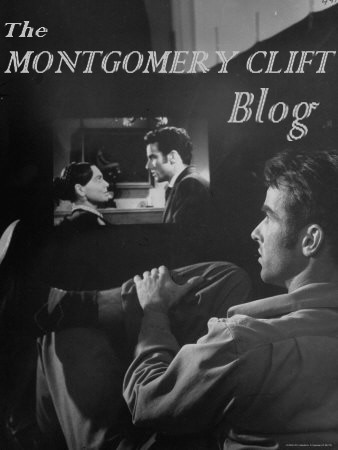
















.-+albornoz+(4)+BLOG.jpg)
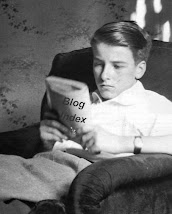
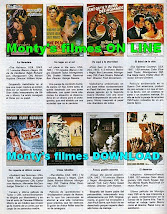


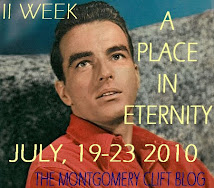
















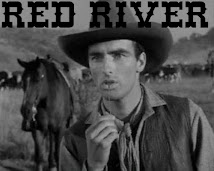


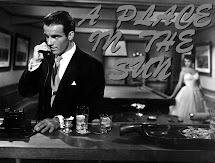2.jpg)
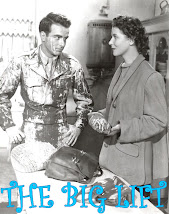.jpg)


.jpg)

